Mazda CX-30 Vs Mercedes-Benz GLA Comparison: Lofty Aspirations

Mazda wants into the luxury club. What better way to sneak in than through the sub-compact crossover door?
We’re big fans of the Mazda CX-30 here at AutoGuide. It’s seen off challenges from the volume brands time and again, largely due to a mature drive and one of the classiest interiors under $40,000. But at launch, it lacked the necessary power to really take the fight to the premium competition. Cover charge is at least 220 horsepower at this club.
Get a Quote on a New Mazda CX-30 or Mercedes-Benz GLAThe CX-30 Turbo has the numbers. So does the second-generation Mercedes-Benz GLA-Class, here in 250 4MATIC guise. As the newest version of the German big three’s sub-compact offerings, it’s a massive improvement over the previous generation, and the stoutest challenge for Mazda’s crossover yet. Has Mazda truly crafted a vehicle that successfully makes the jump to premium status? We spent a week with both to find out.
Interior and Cargo Space
CX-30: During a soggy week, the CX-30’s cabin was a welcome oasis of calm. Mazda has gone minimalist with its latest interiors, but not to the point that it’s tossed out its entire button supply, dropped a tablet in the middle of the dashboard, and called it a day. (Not pointing fingers or anything.) Considering Mazda has the premium segment in its crosshairs, the biggest revelation here is how quiet the cabin is. Wind and road noise are kept to a minimum, and even the engine is hushed unless you’re asking for all its 250 available horses.
SEE ALSO: Subaru Crosstrek vs Mazda CX-30 ComparisonThe CX-30’s dashboard design is almost organic. Black and brown leather drapes across the full span, flowing down into the door panels. It’s an elegant look begging to be touched, and the quality doesn’t disappear as the eye moves down the center console. Every control has a consistent click to it, as well. Managing editor Kshitij calls the steering wheel “among the best in the business to hold,” with Mazda perfecting the size and thickness of the tiller. The buttery smooth leather is a real treat, too. The driving position is very car-like, with ample leg room and a comfy, supportive, power-adjustable seat. Unfortunately, front-seat passengers only have manual controls.
All that style comes at a price, namely space for rear passengers and cargo. The Mazda technically has the same 38.3 inches (973 mm) of head room with or without the moonroof, but the accompanying bump is right in the sightline. Pair that with a sloping roof line and small side windows, and the CX-30 definitely feels the tighter of this duo. The measurements confirm as much: there’s just 36.3 inches (921 mm) of rear leg room, and 53.6 inches (1,361 mm) of shoulder room. While the rear doors look longer, the shape makes ingress and egress more difficult, as well as installing any car seats.
The CX-30’s cargo opening is more curved than the GLA’s. Clear the lip and there’s more storage space than the Merc, at 20.2 cubic feet (572 liters). Folding the second row expands that to 45.2 cubes (1,280 L), forfeiting 5.3 cubic feet (150 L) to the GLA.
GLA: Nowhere is the difference in what “premium” means to these two brands more pronounced than inside both crossovers. While the Mazda is all suave minimalism, the Benz is a techno-futuristic, steampunk space. If the big dual-screen slab of glass isn’t enough of a statement, the cool LED ambient lighting is sure to wow passengers. The door panel design is straight lines, giving the GLA more of a traditional off-roader feel, especially its chunky metal handles. There’s more door-panel storage space in here, too.
SEE ALSO: Toyota RAV4 vs Nissan Rogue ComparisonLooking elsewhere, the material quality is merely good, not great. The parts of the dashboard not covered by screen or carbon fiber-like trim are pretty standard textured plastic. The center console uses a liberal amount of piano black, so it’s a keen collector of dust and fingerprints. Both Kshitij and I like the half-leather, half-Alcantara seats though, and here the front passenger gets power adjustments, too. I prefer the Merc’s dual-door center console storage, which seems to hold more than the Mazda’s similar space.
That’s a consistent story within the Mercedes. Front-row riders will find three additional inches of headroom in the GLA, its 40.8 inches (1,037 mm) easily shading the Mazda’s 37.8 (961 mm). Front leg room is down slightly on the CX-30, though 41.4 inches (1,045 mm) should still be plenty for all but the NBA-aspirational among us. In the back, passengers find a hair’s less head room (38.1 inches / 969 mm), but the flatter roof- and window line gives the impression of more space. Meanwhile leg room is 38.4 inches (976 mm), and the GLA’s rear bench even slides fore and aft. Fitting three abreast is less of a squeeze with 54.8 inches (1,393 mm) of shoulder room, too. Rear-seat entry is easier here thanks to a higher ride height and doors that open wider. Added bonus: all doors stretch down to the very bottom of the body work, ensuring you won’t track any dirt inside or onto your pant leg.
Mercedes quotes just 15.4 cubic feet (435 L) of storage space, though the GLA has a nicely square opening. Fold down the second row and it is the storage champ, boasting 50.5 cubic feet (1,430 L) of stuff-swallowing space.
Bottom Line: We’ve got two distinct flavors of interior experience here. The Mazda is quieter, both in terms of NVH and its reserved, classy design. Fans of the flash will adore the GLA, with crisp screens and aviation-inspired air vents dominating the design. There’s a larger range of material quality within the Merc; the Mazda is more consistently great.
In the space race, the Mercedes has the clear advantage. It’s roomier, and easier to get into and out of. It’ll swallow more of your clan’s gear, too.
Since both vehicles have their respective strengths, we call this one a tie.
Tech and Features
CX-30: Mazda drops an 8.8-inch screen atop the dashboard in the CX-30. It’s not a touchscreen, instead forcing drivers and passengers to interact with a rotary dial on the center console. That’s good for drivers—Mazda says it minimizes eyes-off-the-road time—but more frustrating than anything else for passengers. It’s also an example of minimalism going too far; the whole screen is used for just one piece of information at a time. Kshitij prefers the dial to the Merc’s touchpad, and I feel the same. We’re both fans of Mazda’s hybrid analog-digital instrument panel, too. It’s clever, yet still traditional. A head-up display is always welcome, as well.
There are other small touches that help the CX-30 achieve that premium goal. A wiper-mounted washer? Neat. Soft-fade turn signals? Cool. The afore-mentioned lack of power adjustments for the front passenger seat feels like a miss, though. Same goes for the lack of a lock button on the power tailgate.
Mazda’s native navigation is merely okay. It isn’t as intuitive as the Mercedes’ system, and feels laggy in comparison.
GLA: “Must have,” says Kshitij right away about the Merc’s (optional) twin 10.25-inch screen setup. “No matter which Merc you buy. This has to be part of the package.” We’re on the same page here. MBUX is arguably the best system in the business, as pretty as it is practical. Drivers can quickly flit between screens via the tiny touch-sensitive pads on the steering wheel, keeping their hands right where they need to be. Left pad for digital instrument panel, right for infotainment. Simple.
SEE ALSO: 2021 Kia Seltos Turbo vs 2020 Mazda CX-30 ComparisonThe virtual assistant, while over-eager, is quite good at deciphering plain language commands. Navigation instructions work well, and show off one of the GLA’s USPs: augmented reality navigation. Use the native setup, and the central screen will lay arrows overtop a live feed from the front camera. In crowded city centers, this is a godsend.
Hands-full shopping days are made easier with the kick-activated rear hatch. It includes a lock button, too. The only bit of tech I miss inside the GLA is a head-up display, though it is optional.
Bottom Line: This is the Merc’s category, no question. Mazda is onto something with its focus on minimizing driver distraction by removing touchscreens, but they remain the best systems for passengers. More options are better, and the Merc nails that with no less than three main input methods for its infotainment.
Powertrain, Driving Feel, and Fuel Economy
CX-30: Under the hood of the CX-30 Turbo is Mazda’s familiar 2.5-liter turbocharged four-cylinder. Even on 87-octane juice, the CX-30 produces a healthy 227 horsepower and stout 310 pound-feet of torque. Feed it the same premium gas as the Merc requires, however, and those numbers swell to 250 hp and 320 lb-ft. Lesser CX-30 models can come in front-drive form, but this torque-tastic motor requires AWD.
The turbo-four is a peach in something this size. As the numbers suggest, the torque is the dominating trait here. The CX-30 surfs along on a wave of twist, the six-speed automatic ably picking the right ratio for the job. Shift speeds are notably slower than in the Mercedes, though they’re smooth. Switch on Sport mode and the CX-30 will hold gears for longer, though it feels a little uncouth doing so.
Mazda has found an excellent ride and handling balance with the CX-30 Turbo. It’s planted in corners, yet retains that loose-limbed suppleness that is present in every Mazda, MX-5 included. It allows the CX-30 to soak up bumps with impunity, yet never devolve into sloppiness. There’s some body lean, as Kshitij notes he “expected it to be a bit more firm in the corners.” The steering has more weight and feedback than the numb GLA helm, boosting driver confidence. Same goes for the brakes. Kshitij sums it up: the CX-30 “is the best of both worlds, and the AWD proves to be fun on gravel roads too.”
You’ll be filling up the tiny-tanked CX-30 more often. The EPA rates the Turbo at 22 mpg city and 30 mpg highway, for a combined 25 mpg rating. Canadian figures are 10.5, 7.9, and 9.3 L/100 km, respectively. A reminder that the CX-30 will accept the cheaper swill, too.
GLA: The GLA is down on power, but you’d never know it around the city. The 2.0-liter turbocharged four-cylinder spits out 221 hp and 258 lb-ft of torque, all routed through an eight-speed dual-clutch transmission. The DCT is the key here, shuffling through ratios with a quickness the Mazda can’t match. It provides more options too, while still having the long-legged top gears for maximum fuel efficiency. Speaking of, the GLA posts superior numbers at the pumps, to the tune of 24 mpg city, 33 mpg highway, and 27 mpg combined (9.8/7.2/8.7 L/100 km). Front-drive mode eke out an extra 1 mpg on every front.
Out on open roads and highways, the Merc’s bluffer nose and more modest power output leave it feeling comparatively short of breath. It’s not in any way lacking; it’s just that the Mazda out-muscles it.
“It’s exactly what you would expect from a luxury entry-level crossover,” says Kshitij after a few days of time with the GLA. “Doesn’t pull at the heartstrings in terms of driving dynamics,” he continues, “but isn’t disappointing either.” The GLA is undoubtedly the softer of the two, even in its sportiest drive mode. The steering is way too light for either of our tastes, but it does make for a pointy inner-city experience. At high speeds the GLA rides with a sure-footed feel, though there’s more wind-noise than the CX-30.
Bottom Line: The artist formerly known as the Zoom-Zoom company can still inject genuine driving fun into anything, even a sub-compact crossover. When the task at hand is nothing more than cruising, the CX-30 remains a smooth, comfortable cruiser too. It comprehensively outpoints the Merc in all measures except fuel economy.
Safety
CX-30: In the US, even the $23,225 entry-level CX-30 features automated emergency braking, adaptive cruise control, auto high beams, lane-keep assist, lane departure alert, and driver attention alert. Blind-spot monitoring and rear cross-traffic alert show up on the next trim up. In Canada, the latter two are standard across the lineup, but the rest come on-line from the mid-level GS trim ($29,450 CAD) up. This tester includes all of that safety equipment, plus adaptive LED headlights.
The Insurance Institute for Highway Safety (IIHS) has given the CX-30 its highest Top Safety Pick + designation, for models built after September 2020. This includes the coveted Good rating for the Mazda’s headlights, on every trim except … the Premium, specifically models built prior to October 2020. The Premium’s adaptive headlights earned a Poor rating for excessive glare.
Meanwhile, the National Highway Traffic Safety Association (NHTSA) handed the CX-30 a full 5-star rating on every crash test result. The Mazda scored a 4-star rating for rollover risk, typical of crossovers.
GLA: Mercedes fits every GLA with automated emergency braking, attention alert, fully LED exterior lighting, tire pressure monitoring system, and blind spot monitoring (the latter is optional in Canada). A driver assistance package ($1,700 / $1,700 CAD) piles in all the expected advanced driver assists, including brake assist with cross-traffic function, lane-keep assist, enhanced stop-and-go, and GPS-based cruise control speed settings. Adaptive cruise control is part of this package in the US; in Canada, it’s bundled with a separate exterior lighting upgrade. The GLA’s system is more advanced than the one in the CX-30, capable of making lane changes with the activation of an indicator (traffic permitting).
The package includes a lot of tech for the price, but the fact remains it’s additional cash, for many things that are baked into the MSRP of the Mazda.
Neither the IIHS nor NHTSA have tested the latest GLA-Class.
Bottom Line: Mazda has one of the best safety records in the industry, with top marks from both the IIHS and NHTSA across all of its four-door lineup. Pair that with the healthier standard suite of driver assists and it’s an easy win for the CX-30 here.
Styling
CX-30: It’s a slightly stubbier Mazda3 on stilts, and fed a healthy diet of black plastic cladding. In Polymetal Grey the CX-30’s chunky cladding is less visually distracting, but it remains an acquired taste. Personally, I’m over the black wheel trend, too. Mazda’s current design language remains as handsome as ever though, and the CX-30 looks decidedly more car-like than the GLA. Whether that’s a good thing or not is up to you.
GLA: The second-generation GLA no longer has the bloated hatchback form of the original. It’s still quite rounded, but with a bluffer nose and slimmer headlights helping it look more like the rest of the extensive Benz SUV family. The AMG front bumper and larger 19-inch alloys fill out the looks, too. In profile it still looks stubby, no doubt due to the short rear doors, but in truth it’s around 0.6 inches (15 mm) longer than the CX-30. The flip-side of the more upright rear hatch is a squarer load space, however.
Bottom Line: You know the story here: tastes change from person to person. Whether you prefer the more lithe Mazda or the bulkier Benz, both of these little trucklets generally stick to the small SUV script.
Pricing
CX-30: We’re skipping right past the naturally-aspirated models for the purposes of this comparison, meaning the cheapest way into a CX-30 Turbo is $31,225, including $1,175 in destination. Mazda offers the Turbo in three trims in the US; in Canada, it’s just one, the Turbo GT ($38,200 CAD) being roughly equivalent to the Turbo Premium ($33,625). The move up adds four extra speakers (for a total of 12), the power liftgate, adaptive LED headlights, HUD, native navigation, and more. The Premium Plus ($35,225) drops in a 360-degree camera, parking sensors at both ends, and Traffic Jam Assist.
The only option on our Canadian-spec tester is the Polymetal Grey paint; no-cost in the USA, and $200 CAD north of the border.
GLA: An absolute base-spec, front-drive GLA 250 run $37,280, including a $1,050 destination charge. That’s already clear of the top CX-30, and we haven’t added 4MATIC AWD, a $2,000 upcharge. AWD is standard in Canada, where the GLA 250 starts at $42,400 CAD, before destination. (Mercedes-Benz Canada allows each dealer to charge its own destination amount.)
This tester took a healthy trip through the options list, gaining the Premium Package ($1,750 / $3,600 CAD), Night Package ($3,000 / $2,200 CAD), navigation ($1,295 / $1,000 CAD), 360-degree camera and active parking assist ($1,090 / $1,600 CAD). The excellent Burmester surround sound system is another $850 ($700 CAD), too.
All in, this is a $49,605 GLA 250, and a pre-destination $53,065 CAD in Canada. Add another two grand to that latter figure based on the average Great White North destination charge.
Bottom Line: We always knew the GLA was going to ring in above the CX-30. We didn’t expect it to be almost 50 percent more, though. The Merc does have more toys, but it also has fewer driver assists, requiring buyers to cough up extra dough for things like lane-keep assist and adaptive cruise control. The Burmester sound system is worth the upgrade, however.
At these as-tested price points, you could either net the CX-30 and the nicest possible classic Miata you want, or even start looking at a no-options GLA 35 AMG. The CX-30 wins big here.
Verdict: Mazda CX-30 vs Mercedes-Benz GLA Comparison
We intentionally went into this comparison blind to the price difference between the 2021 Mazda CX-30 and Mercedes-Benz GLA 250. The Mazda’s value play was obvious. What we wanted to know was whether the CX-30 could genuinely compete with the latest entry-level luxury crossover on merit. And it does.
The Mercedes offers a lot of surface-level appeal. Its infotainment system is still the gold standard as far as we’re concerned, bright and clear and easy to navigate, especially via the wheel-mounted pads. That is the area where Mazda needs to improve most if it truly wants to stand raised nose to raised nose with the Germans. The Merc benefits from a more spacious back row as well, a continued sore spot for the smaller Mazda.
But the GLA can’t match the CX-30’s power, its driving composure, or its comprehensive suite of standard features. If the draw of the vaunted three-pointed star is just too great, we’d recommend the GLB instead. It’s barely more money than the GLA, and positively full of character.
Mazda has nailed the brief with the CX-30, and the Turbo truly elevates the little crossover to the same level as the GLA. In fact, it’s better, and the winner of this face-off. Welcome to the club, Mazda.
Become an AutoGuide insider. Get the latest from the automotive world first by subscribing to our newsletter here.

Kyle began his automotive obsession before he even started school, courtesy of a remote control Porsche and various LEGO sets. He later studied advertising and graphic design at Humber College, which led him to writing about cars (both real and digital). He is now a proud member of the Automobile Journalists Association of Canada (AJAC), where he was the Journalist of the Year runner-up for 2021.
More by Kyle Patrick



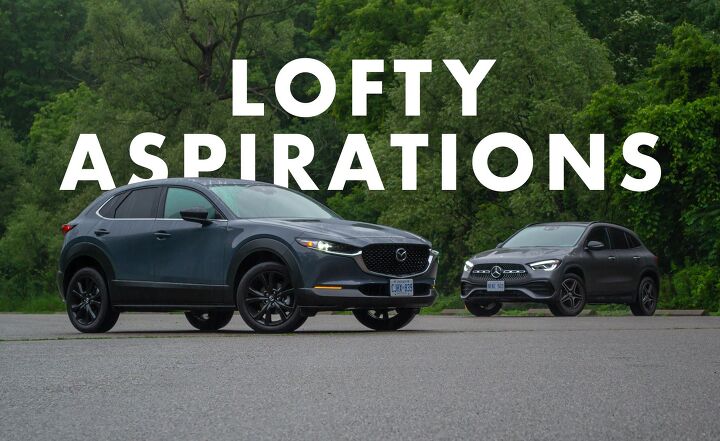
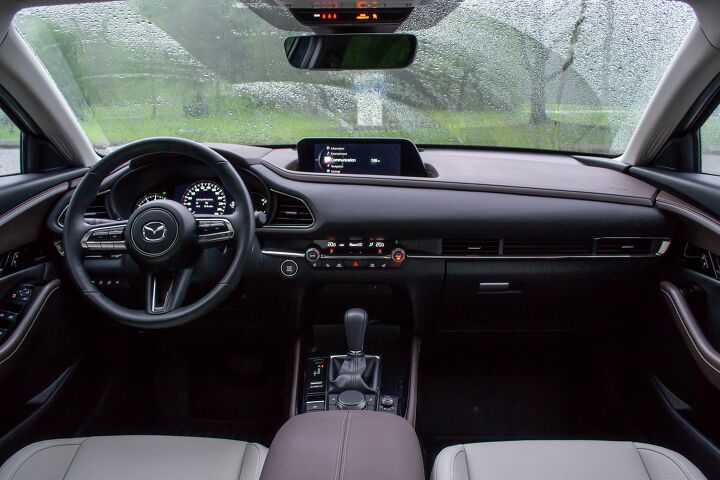





























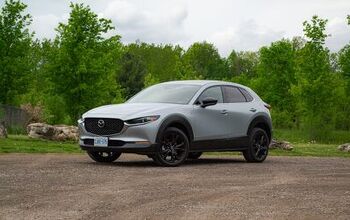
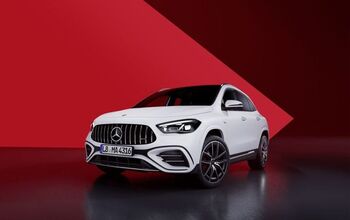
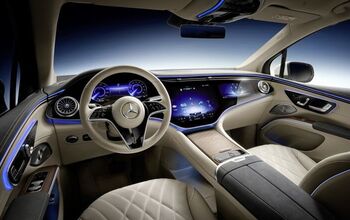
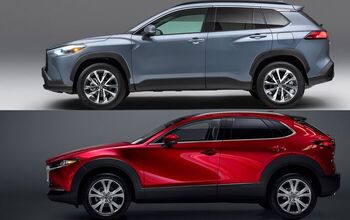














Comments
Join the conversation